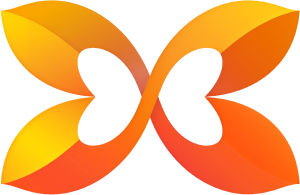Small Add-Ons, Big Profits: Upsell Strategies for Florists
In the flower business, margins are everything. You can’t control weather, you can’t control rose prices the week before Valentine’s, and you can’t force a customer to double their order just because you hope they will.
What you can do is increase average order value by offering intentional, irresistible add-ons—without touching your core product line.
These aren’t throwaway trinkets. Done right, add-ons are high-margin, brand-aligned enhancements that boost revenue and make your customer feel like they’re getting something special.
Let’s talk upselling—florist-style.
Why Add-Ons Work (and Why Most Florists Underuse Them)
Add-ons work because:
- They remove friction—the customer is already in a buying mindset
- They tap into the “gift upgrade” impulse (more thought = more love)
- They trigger the “small treat” effect—just a little more feels easy to justify
Most florists underuse them because:
- They don’t want to feel “salesy”
- They hide them deep in menus
- They haven’t set up UX-friendly placements in checkout
- They assume people won’t spend more
But when luxury bouquet pricing is already normalized, small additions feel like natural extensions—not pushy upsells.
The Best Add-Ons for Florists (by Margin and Psychology)
Here are proven gift packaging florist and product add-ons that drive revenue without hurting your brand image:
Pro tip: source add-ons from local makers to align with your aesthetic and support brand storytelling.
Where to Place Add-Ons Online (Without Hurting Conversion)
Upsells should feel like thoughtful suggestions—not roadblocks.
Add-on placements that convert:
- Product page modules: “Complete the Gift” section
- Cart popups: “Want to add a card for $6?”
- Checkout step: before payment confirmation
- Post-purchase email: “You forgot a vase? We saved one for you”
Use clear, benefit-driven copy:
- “Make it extra special”
- “Upgrade her bouquet with a keepsake vase”
- “Don’t forget a message card!”
Your tone matters more than your discount.
In-Store Add-Ons: Touchpoints That Trigger Action
If you have a physical shop, upsell at these key points:
1. The Counter
- Add small-item displays at eye level
- Use signage: “Popular Pairings” or “Customer Favorites Under $20”
2. Workstation
- Train staff to ask:
- “Would you like to add a card?”
- “Want it wrapped in our signature paper?”
3. Delivery Desk
- Offer timed delivery upgrades (“before 10am”)
- Suggest premium packaging flowers for long-distance gifting
The more tactile the experience, the easier the upsell.
Pricing Strategies: How to Keep Margins and Look Premium
Here’s how to set prices that make sense—and profit.
Bundle-Based Markup
Add-ons in bundles can be priced slightly lower than standalone items.
Example:
Card: $6 alone → $4 when part of a $120 “Deluxe Gifting Set”
This feels generous without reducing core value.
Tiered Packaging
Offer packaging levels:
- Classic (included)
- Signature ($8)
- Luxe ($18 with tissue, wax seal, ribbon)
This also supports your florist pricing strategy for different buyer types.
Free Add-On Thresholds
Use flower shop order minimums to unlock gifts:
“Orders over $150 include a complimentary designer card.”
It feels like a bonus. It’s really a smart AOV push.
Add-Ons as a Bundle Strategy (Without a Discount)
Who said you have to discount to bundle?
Try:
- Occasion-specific bundles (e.g., “Date Night Set”)
- Visual combo listings: bouquet + candle + card
- Landing pages with themes: “Self-Care”, “Mom’s Favorite Things”, etc.
You’re not reducing price—you’re increasing perceived value.
This is how smart flower bundle deals work without damaging positioning.
The Role of UX and Visual Merchandising
Whether online or in-store, customers need visual cues to say yes.
Use:
- Flat-lay product photos with add-ons in frame
- Icons for “Add a card” or “Upgrade packaging”
- Side-by-side comparisons (Classic vs Signature wrapping)
Think of your add-ons as storytelling devices, not just revenue tactics.
Upsell Scripts and Prompts That Don’t Sound Pushy
Your words matter. Use language rooted in empathy and gifting.
Try:
- “Would you like us to include a keepsake vase for $18?”
- “Would you like her to receive it in our signature gift box?”
- “Want to add a personal card? It’s just $6 and makes a big impact.”
Avoid:
- “Anything else?”
- “Do you want to buy something extra?”
You’re not selling—you’re curating the experience.
Conclusion: Small Touches, Serious Impact
In a product-based business like floristry, profits often live in the margins—literally. Small add-ons are the florist’s secret weapon: easy to implement, easy to scale, and powerful in emotional resonance.
And when designed with intention, they do more than add revenue—they elevate your brand and deepen your customer relationships.
At Bloom Rush, we help florists craft upsell strategies that feel premium, never pushy—using smart product design, UX flow, and pricing logic that work across online and in-store channels.


